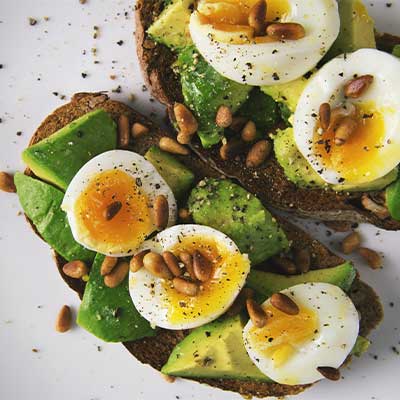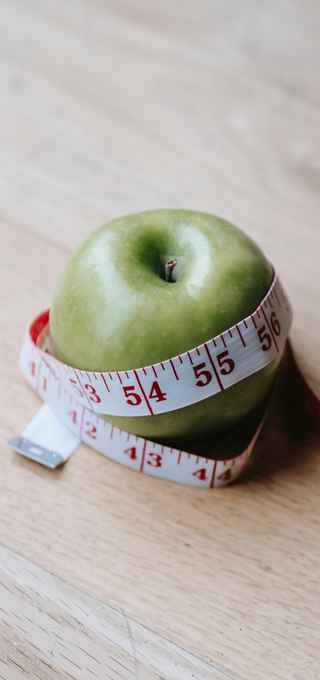Last Updated on July 30, 2024 by Nicole
Protein – we’ve all heard about how important it is. Whether you’re building toned muscles or weight managing with a low-carb diet, today it’s all about knowing how to consume protein, including when to drink protein shakes. At a basic level, protein is one of the most essential macronutrients that our bodies need to build muscle. Proteins produce enzymes, activate hormones and play a large role in tissue development. In the Health and Fitness Industry, protein powders are some of the most popular supplements on the market due to their convenience and vast benefits.
Protein shakes are a staple in most health and fitness enthusiasts’ daily regimens. They enhance performance, increase or tone muscle, and assist in weight loss. In fact, among the three energy-carrying macronutrients (fats, carbohydrates, and proteins), proteins are tied with carbohydrates for carrying the least number of calories (just four) per gram!
Keep in mind, however, that protein shakes and powders are intended as dietary supplements, which means they should be included as part of a broadly healthy and balanced diet. Besides avoiding those that carry known health risks, it is equally important to know how and when to drink protein shakes. Today, we’re going to go over five ways for you to see the greatest benefit from your protein shake.
When to drink protein shakes

First off, it is better to drink your protein shake with your meal instead of between meals. Typically, sources of complete protein (those that have all the essential amino acids) require more preparation. However, by adding your shake to your meal as the primary protein source, you can spend more time enjoying your meal rather than preparing it. This method also appears to be more beneficial than consuming protein between meals.
A recent systemic review was done comparing the effects of consuming protein shakes with vs. between meals on individuals who perform regular resistance training. The group that consumed protein shakes with meals presented a 4% greater increase in lean body mass, a 28% decrease in fat mass, and a 16% greater increase in the ratio of lean mass to fat mass over time (1).
There’s a dispute about the so-called “anabolic window”; this window refers to consuming your protein 20 minutes or even 1 hour following your workout to get any sort of benefit from your resistance training. This is not completely true. Adequate protein consumption throughout the day is important to gaining muscle. However, a 10-week study conducted by Victoria University tested this theory of protein timing.
They compared trained individuals who had consumed a protein shake with 32 grams of protein immediately before and after a workout to another group of trained individuals on the same training program who consumed the same 32-gram protein shake in the morning and evening.
The results showed that the group who consumed the shakes around the workout time showed greater increases in muscle mass, higher amounts of strength (Bench Press, Squat, and Deadlifts were tested), and greater reductions in body fat percentage (2). So it is probably best to drink your shake around the time of the resistance training workout!
In addition, there are a variety of choices when it comes to protein supplements. Some of the most popular varieties are listed below, but people are increasingly trying newer kinds (like CBD protein powder) with different kinds of benefits!
What kind of protein supplement to consume
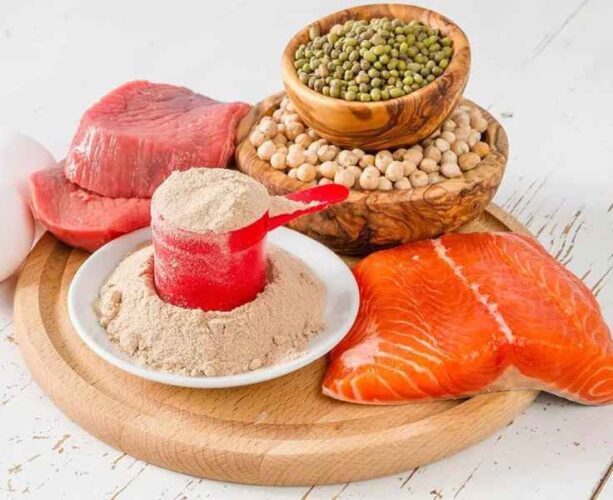
There are several different protein powders one can consume. Depending on your dietary needs, some are milk-based, while others are plant-based. Each carries its own unique set of benefits:
Soy Protein
Soy is one of the few plant-based, complete proteins that you can find. This is a great alternative to whey or casein proteins for those who favor a more plant-based diet. This protein source has also been shown to have cardiovascular benefits such as reducing total cholesterol, low-density lipoproteins (LDL), and triglycerides (3).
Casein Protein
Derived from milk, which gives it the white color you see, this protein is especially known for its slow digestion in the body. It provides nutrients over several hours as opposed to other dairy protein sources, like concentrate or isolate. Casein protein also contains high amounts of phosphorus and calcium, which are good for bone structure (4).
Whey Protein Concentrate
Whey is a byproduct of the manufacturing of cheese, making it a complete protein source from dairy. Although whey concentrate contains smaller concentrations of protein (25-89%), it requires less processing. This usually means that it contains a higher amount of carbohydrates, fats, and biologically active proteins.
Whey protein also contains adequate amounts of BCAA’s, which are important for keeping the body in a muscle-building state (anabolic). It also includes high levels of an amino acid called Cysteine, which can enhance antioxidant production and improve immune system support (4).
Whey Protein Isolate
Also a form of dairy protein, isolates are the purest form of protein available, containing concentrations of protein at 90% or more. However, due to the extra processing from concentrate to isolate, some protein molecules can become denatured, thus reducing their effectiveness (4). This complete protein source is extremely beneficial for those who simply want to increase protein intake without the extra fat or carbohydrates.
Pea Protein
Like soy, pea protein is one of the few plant-based, complete protein sources available. It is high in the amino acid Lysine, which is beneficial for immune support. Lysine is also a precursor for Carnitine, which is known for its ability to convert fatty acids into energy. Another benefit of this protein is that it contains high amounts of iron (5). The high iron content can be exceptionally beneficial for vegan/vegetarian women, especially during their menstrual cycles.

With so many protein shake options out there, how do you know which one to choose? Well, it’s pretty simple – only choose from the best kinds!
The folks at Promix Nutrition just fundamentally get this. Their one-stop-protein shop has several good curated choices for you to pick from. But best of all, their products are all organically sourced, ranging from whey to vegan, paleo, or keto-based supplements that are personalized for your individual dietary goals!
And if you don’t love it, you can return your order within 30 days. So say goodbye to those inedible protein supplements of regret! These guys won’t waste your time, money, or taste buds.

This is our favorite protein powder, but there are other protein brands out there depending on where you live.
Using Carbohydrates to your advantage
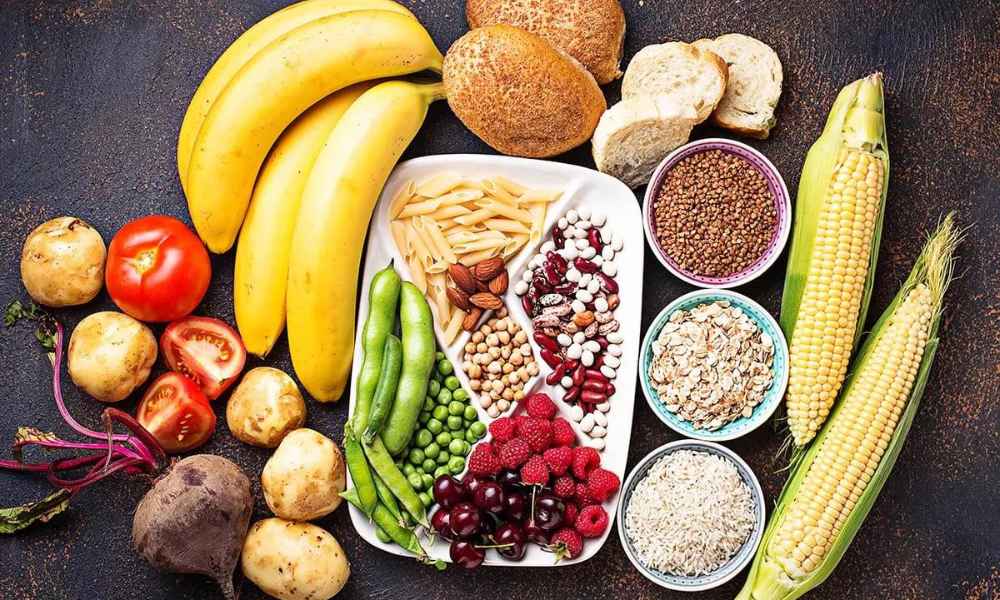
You’re probably aware that consuming carbohydrates will result in what is known as a spike in blood insulin levels. The hormone insulin is commonly referred to when discussing diabetes but helps facilitate anabolic (muscle-building) effects in a healthy human. Essential amino acids are the building blocks of proteins.
Studies show that combining carbohydrates (glucose) and essential amino acids post-workout has a greater synergistic effect on muscle protein synthesis than drinking them separately (6). Glucose consumption alone has been shown to reduce the breakdown of muscle fibers when consumed immediately post-exercise (7). I suggest adding whole foods to your shake to comply with #4 on our list (see below). Simple carbohydrates that break down quickly would be optimal, such as mangos, pineapples, bananas, grapes, oranges, or even any kind of all-natural juices.
How to get protein from your diet
Not all proteins are the same, but obtaining protein from whole foods is critical for maintaining a healthy and balanced diet. Therefore, it is important to be conscious of which kinds you’re eating. Proteins are made up of a chain of 20 organic compounds called amino acids. Our body can produce 11 of these 20 amino acids, while the other nine we must get from our diets. These nine amino acids are “essential amino acids” because our bodies cannot produce them on their own. Complete proteins, which contain all of these essential amino acids, are found in chicken, fish, eggs, beef, dairy, and soybeans (8).
An incomplete protein, on the other hand, is a source of protein that is lacking one or more of the nine essential amino acids. Incomplete protein comes from beans, peas, grains, nuts, seeds, and vegetables. While these are all plant-based, vegetarians and vegans are in luck!
You can create a complete protein snack/meal by combining two or more incomplete protein sources that together compensate for the lack of essential amino acids. For instance, grains are low in the essential amino acid lysine, while beans and nuts (legumes) are low in another essential amino acid, methionine (8). Some examples of complementary protein sources are hummus with pita bread, whole grain bread with peanut butter, or rice and beans (9).
How much protein to consume
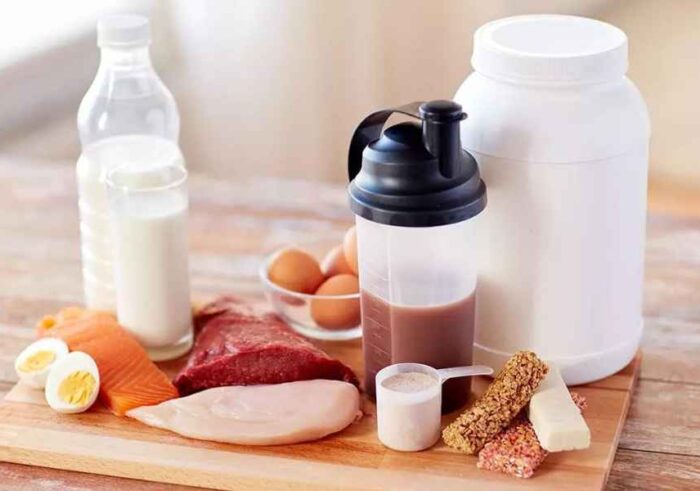
There are many schools of thought on when to drink protein shakes. Talking about protein shakes alone, it is a good idea to limit your consumption to no more than 20-30 grams of protein per shake. Most protein shakes contain anywhere from 20-30 grams of protein per serving, so a good rule of thumb is to just stick with one.
Supplement companies conducted research showing only a slight increase in the blood level of essential amino acids when consuming 20 g of protein vs. 40 g of protein in one sitting. This tells us that after 20 g of protein, your body will break down the remaining essential amino acids at a higher rate (10). Therefore, by doubling your intake, you’re not necessarily getting double the effects.
At this point, you’re probably wondering how much you should be consuming per day. To maximize muscle growth stimulus, you should consume 1.6-2.2 grams of protein per kilogram of body weight (11). For example, a person weighing 200 lbs. would benefit from consuming 145-199.54 g of protein per day.
Risks
Proteins are not all created equal. It is a good idea to consume both animal-based and plant-based forms of protein if your diet permits. For example, it has been shown that whey protein is more available to your body than pea and soy protein (12). This is due to the high levels of essential amino acids that it naturally contains. However, it is important to note that chronic consumption of protein from animal sources (whey protein is dairy) can lead to adverse health effects, such as low bone density (caused by the high sulfuric amino acid content in animal proteins) as well as certain cardiovascular risks.
There are also general risks to chronically high protein diets, such as metabolic disorders and renal disease (12). A common practice to vary your protein intake is to consume higher amounts of protein on active days and less protein on rest days. The FDA recommends that the average person consuming 2,000 calories per day should have 50 g of protein per day, but this may vary based on caloric needs (13).
Conclusion
In conclusion, there are several ways that you can get the most out of your protein shake. There are already so many benefits, so why not get even more from your protein supplements? A few helpful tips include knowing when to drink protein shakes with a meal, consuming it before and after your workout, adding a simple carbohydrate to your post-workout shake, and being conscious to not exceed 20-30 grams of protein per shake.
On a final note, protein supplementation and high-protein diets can be beneficial to muscle gain/tone, but you should consider the possible risks of consuming a high-protein diet. However, be aware of the possible adverse effects, especially if the higher protein is mainly consumed through animal protein. Be sure to vary your protein sources and amounts as much as possible to reduce the risk of these effects.
By following one or all of these tips and knowing when to drink protein shakes, you can increase the rate at which your body produces muscle daily. Protein shakes can increase the duration of muscle protein synthesis and reduce the amount of muscle breakdown that occurs after a workout. But be careful with what you eat! If you have a favorite protein supplement, we would love to hear about your shake of choice down below! 😊
Top 10 Best Snacks for Weight Loss and Energy Gain
Eating balanced snacks between meals can energize you…
Weight Loss Detox Demystified: Do Detox Drinks Really Work?
With the holiday season still fresh in our…
9 Healthy Postpartum Diet Tips for Post-Pregnancy Weight Loss
Having a baby and becoming a mother are…
How to Achieve a Plant Based Diet Weight Loss 2024
Trying to get in shape, lose weight, or…
- 20 Affordable Meal Prep Companies and Food Subscriptions Boxes for Busy Families
- 3 Amazing Low-Calorie Meal Preparation Ideas For Busy Moms
- 4 Absolute Mouthwatering Fruit Charcuterie Board Ideas
- 4 Dinner Party Games For Adults For Your NYE Party (Plus Dinner Ideas!)
- 5 Amazing Holiday Cocktail Menu for Cozy Nights With Close Friends
- 5 Delicious, Guilt-Free Super Bowl Desserts You Can Easily Make
- 5 Practical Ways to Stop Sugar Cravings
- 6 High Protein Vegetable Smoothie Recipes Your Taste Buds Will Love
- 6 Mouth-Watering Superfood Recipes That Are Easy to Make
- 6 Restaurants With Great Cocktails in Orlando
- 7 New Years Eve Drinks and Cocktails Menu to Cheer The Year
- 8 Tips to Get Great Intermittent Fasting Results
Is protein shakes good for you?
The additional protein that a protein shake might bring to your diet is not necessary for everyone. But, if you don’t receive enough protein in your diet, protein smoothies can assist. If you’re starting a new fitness routine or upping the duration or difficulty of your current one, protein drinks can be beneficial for you.
Are protein shakes good for weight loss?
You may be able to lose weight by reducing your daily calorie intake by substituting protein shakes for meals. Yet eventually, you’ll have to resume eating solid food. If you don’t make wise dietary decisions, eating solid food could make your excess weight come back.
Is it okay to drink protein shake daily?
Daily consumption of protein shakes is acceptable, but make sure the majority of your protein and other nutrients come from entire foods. You’ll be deprived of additional beneficial nutrients that are essential for health as well as aiding your workout performance and recovery if you don’t consume entire food sources.
References:
- https://academic.oup.com/nutritionreviews/article-abstract/76/6/461/4980809 – Protein with Meals
- https://www.ncbi.nlm.nih.gov/pubmed/19145965 – Soy Protein
- https://www.ncbi.nlm.nih.gov/pmc/articles/PMC3905294/ – Animal vs. Vegetable Pro
- https://www.ncbi.nlm.nih.gov/pubmed/12618575 – EAA and CHO Combined
- https://www.physiology.org/doi/full/10.1152/jappl.1997.82.6.1882?url_ver=Z39.88-2003&rfr_id=ori%3Arid%3Acrossref.org&rfr_dat=cr_pub%3Dpubmed& – CHO post ex and 1 Hr post slow myofibrillar breakdown
- https://www.accessdata.fda.gov/scripts/InteractiveNutritionFactsLabel/factsheets/Protein.pdf – FDA Nutrition Label
- https://blog.myfitnesspal.com/what-the-heck-is-a-complete-protein-and-do-you-really-need-one/ – MyFitnessPal
- https://academic.oup.com/ajcn/article/89/1/161/4598235 – grams of protein per amount per sitting
- https://www.ncbi.nlm.nih.gov/pmc/articles/PMC5828430/#CR40 – protein per day
- https://www.ncbi.nlm.nih.gov/pmc/articles/PMC3905294/ – animal vs. plant protein
